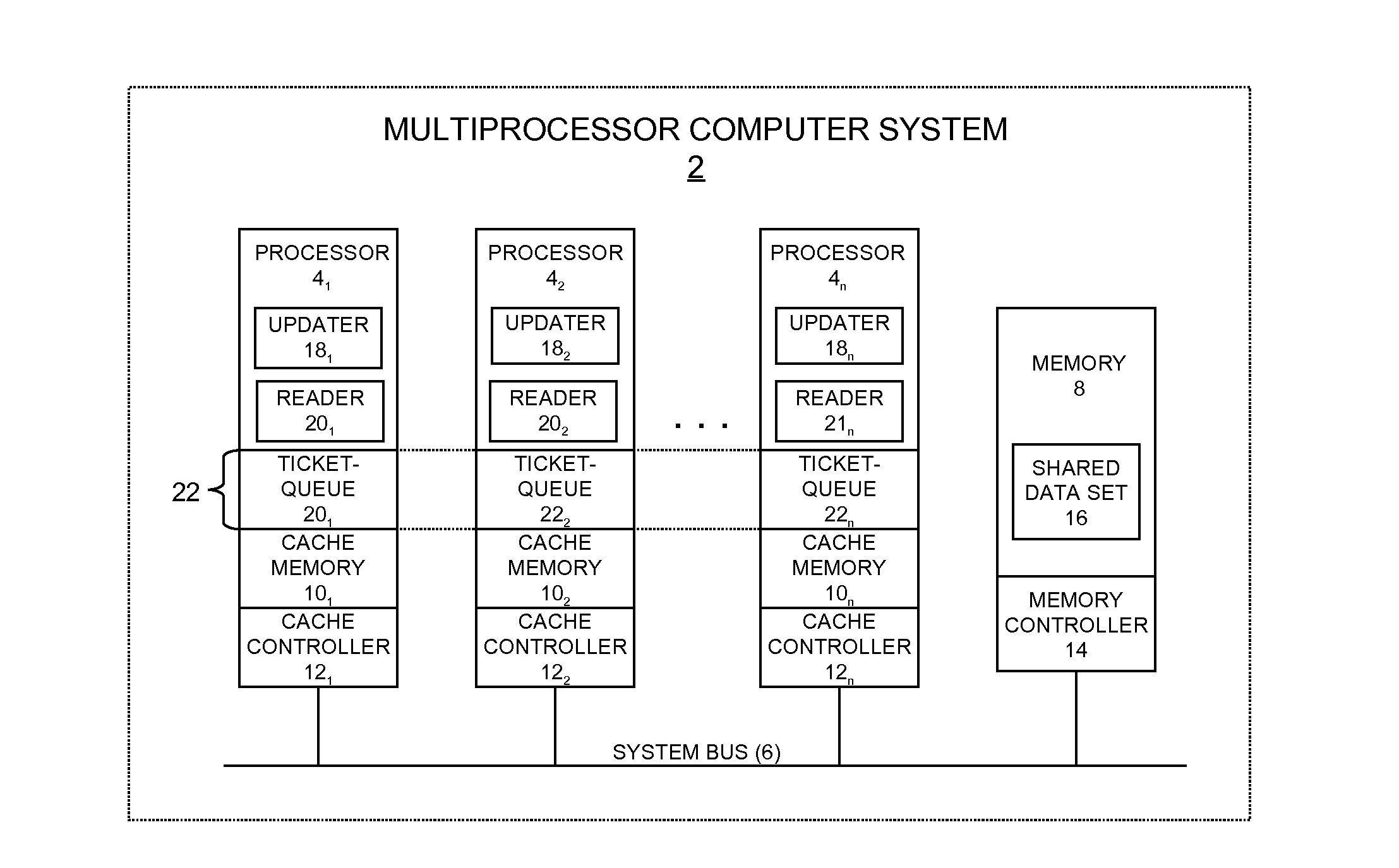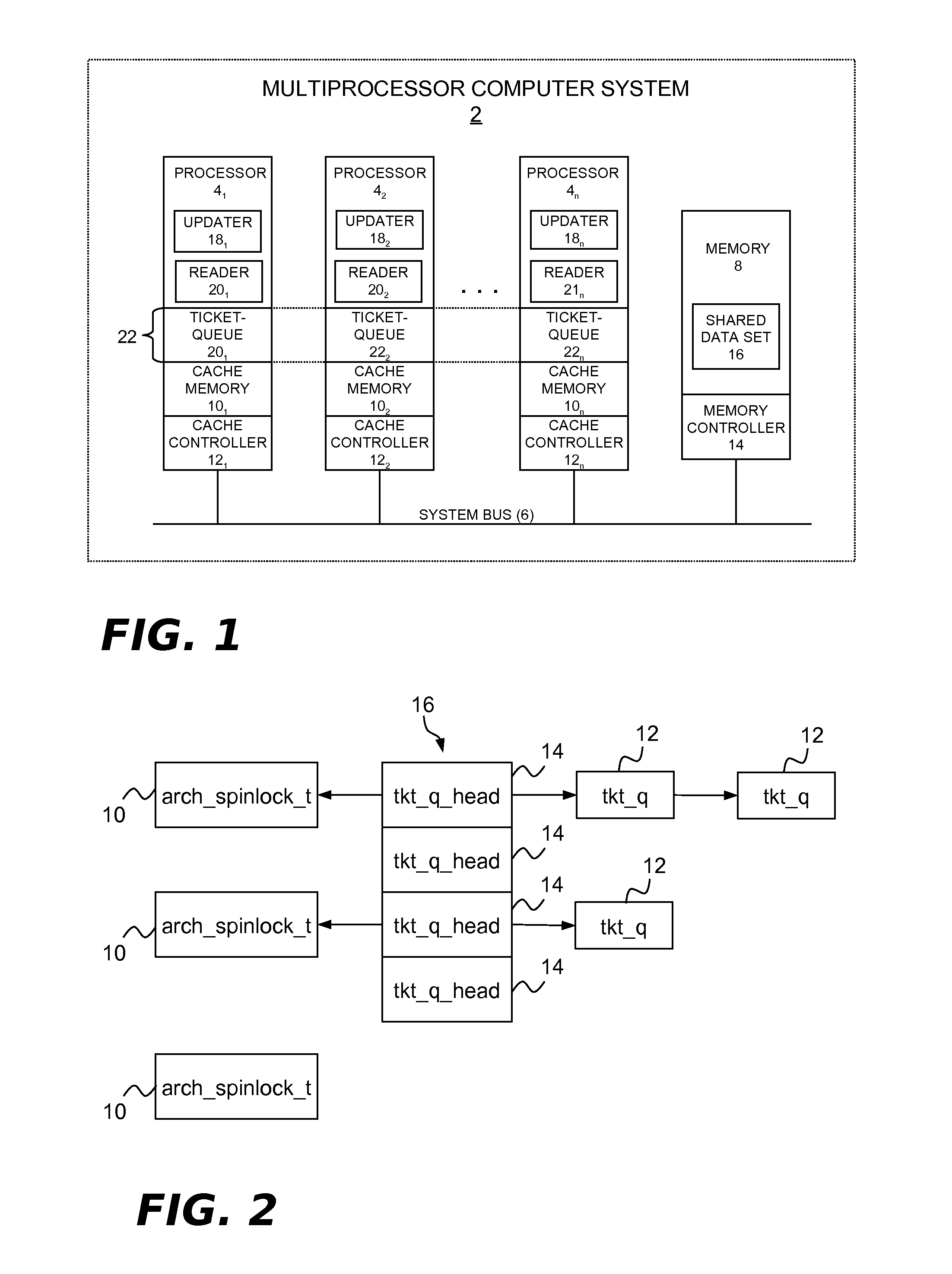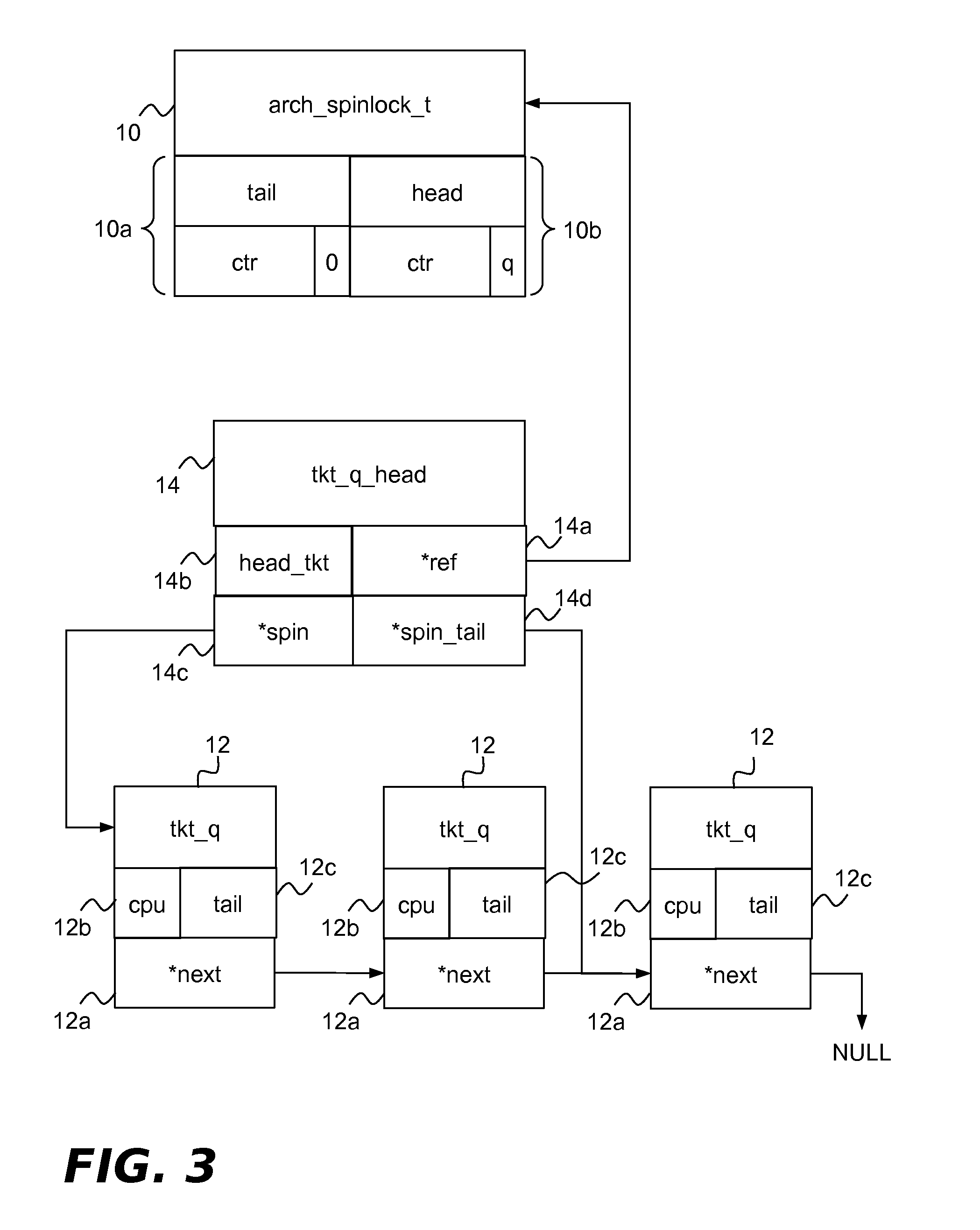Low Overhead Contention-Based Switching Between Ticket Lock And Queued Lock
a queue lock and overhead contention technology, applied in the field of locking, can solve the problems of degrading unlock performance, affecting the performance of ticket locks, and performing poorly at low contention levels, and achieve the effect of low overhead contention
- Summary
- Abstract
- Description
- Claims
- Application Information
AI Technical Summary
Problems solved by technology
Method used
Image
Examples
Embodiment Construction
[0036]Turning now to the drawing figures, wherein like reference numbers represent like elements in all of the several views, FIG. 1 illustrates an example computer system 2 in which the locking technique described herein may be implemented. The computer system 2 may include multiple processors 41, 42 . . . 4n, a system bus 6, and a program memory 8. There are also cache memories 101, 102 . . . 10n and cache controllers 121, 122 . . . 12n respectively associated with the processors 41, 42 . . . 4n. A memory controller 14 is associated with the memory 8. As shown, the memory controller 14 may reside separately from processors 42 . . . 4n (e.g., as part of a chipset). Alternatively, the memory controller 14 could be provided by plural memory controller instances respectively integrated with the processors 42 . . . 4n.
[0037]The computer system 2 may represent any of several different types of computing apparatus. Such computing apparatus may include, but are not limited to, general pu...
PUM
 Login to View More
Login to View More Abstract
Description
Claims
Application Information
 Login to View More
Login to View More - R&D
- Intellectual Property
- Life Sciences
- Materials
- Tech Scout
- Unparalleled Data Quality
- Higher Quality Content
- 60% Fewer Hallucinations
Browse by: Latest US Patents, China's latest patents, Technical Efficacy Thesaurus, Application Domain, Technology Topic, Popular Technical Reports.
© 2025 PatSnap. All rights reserved.Legal|Privacy policy|Modern Slavery Act Transparency Statement|Sitemap|About US| Contact US: help@patsnap.com



